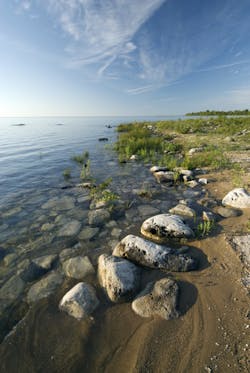WASHINGTON — Jan. 21, 2016 — Recycling, energy recovery and treatment practices helped keep 84 percent of 25 billion pounds of toxic chemical waste from industrial facilities nationwide out of the environment, according to a press release. The other 16 percent was released to the air, water or landfills, most of which are subject to regulations to limit human environmental harm.
The information was release in the U.S. Environmental Protection Agency’s (EPA) annual Toxics Release Inventory (TRI) report for 2014, noted the release. The data represent "a 6 percent decrease in total disposal of other releases to the environment from 2013 to 2014."
Chemical manufacturing facilities and electrical utilities decreased air releases during this time period, contributing to a 4 percent decrease, stated the release. Since 2003, these releases have declined by 55 percent.
Industries such as manufacturing, metal mining, electric utilities and commercial hazardous waste submit TRI data to the EPA, states and tribes each year, reported the release. The Emergency Planning and Community Right-to-Know Act requires these facilities to report toxic chemical releases to the EPA by July 1 every year. The must also disclose pollution prevention and other waste management activities related to TRI chemicals.
You can find the entire release here.
WASHINGTON — Jan. 28, 2016 — The EPA’s 2010 National Coastal Condition Assessment reported a mixture of health in the country’s coastal waters, according to a press release.
Lake Huron at De Tour State Park. SteveDeming/iStock
More than half of coastal and Great Lakes nearshore waters received good ratings for biological and sediment quality, noted the release. One-third received the same rating for water quality.
Despite this, the report stated that predator dish, birds and other wildlife faces risks from contaminants in fish and tissue. Excessive phosphorous is the greatest cause of poor water quality in the nation’s coastal waters.
Other ratings include:
- Biological Quality — Good in 56 percent of coastal and Great Lakes nearshore waters
- Water Quality — Fair in 48 percent of coastal and Great Lakes nearshore waters
- The category was measured as good in 36 percent of these water when measuring for phosphorous, nitrogen, water clarity, chlorophyll a and dissolved oxygen concentrations.
- Sediment Quality — Good in 55 percent of coastal and Great Lakes nearshore waters
- Ecological Fish Tissue Quality — Good for less than 1 percent of waters
Between 2005 to 2006 and 2010 water quality was "unchanged, biological quality improved 17 percent and sediment quality declined by 22 percent."
You can find the entire release here.



